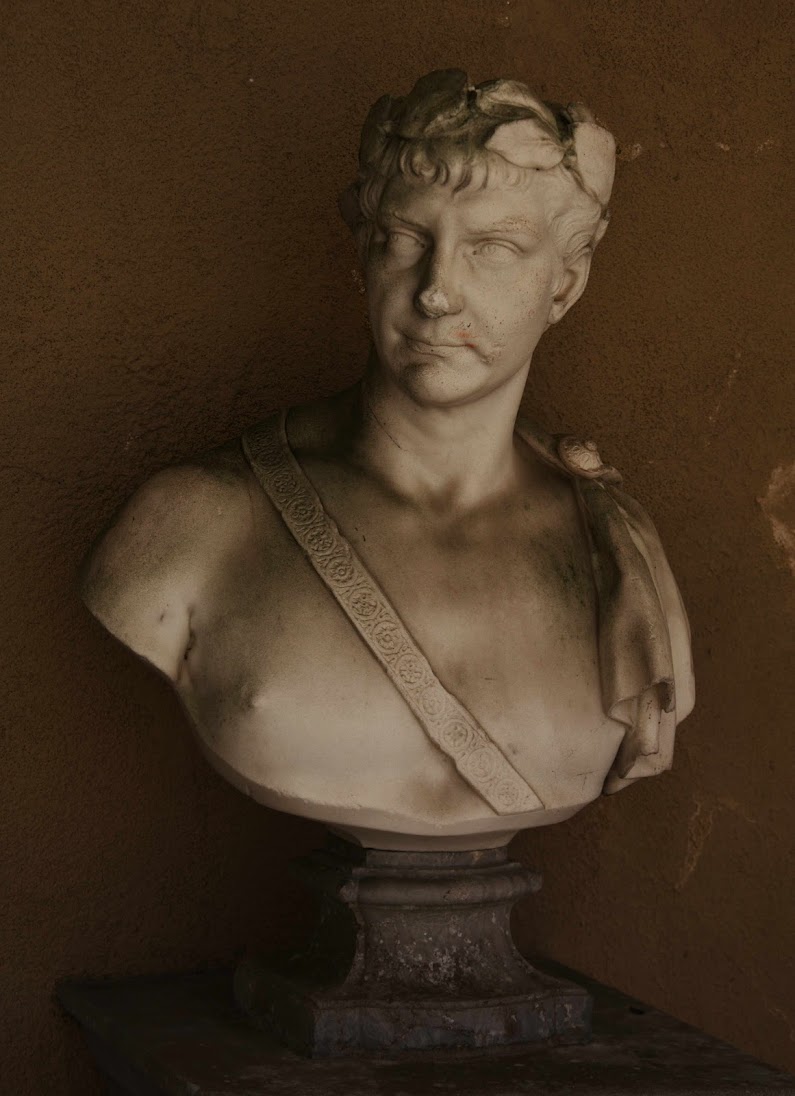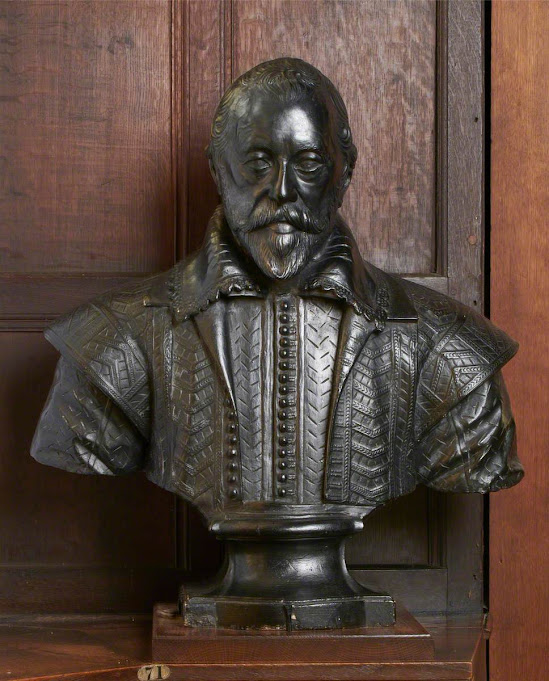In July 1752, Roubiliac travelled with the portrait painters Thomas Hudson and Arthur Pond for a very brief visit to Rome.
As they were travelling to Italy they met Joshua Reynolds at Mont Cenis who was returning from Rome - they met up with him again in Paris on their return journey and they returned to London together Reynolds arrived back in London on 16 October. George Vertue states ' their tour of Italy very quick and their stay very little' that they were in Rome 'only long enough to say that they have seen Rome'. Vertue 3. 162. but the dates suggest that they were in Ital from July until early October -
Roubiliac is later said to have exclaimed to Reynolds that the sculpture of Bernini made his own look
‘meagre and starved, as if made of nothing but tobacco pipes’.
Certainly the busts of the Anima Dannata and Milo of Croton (if one accepts the attribution to him!) illustrated here show his admiration for Bernini, Puget and the Baroque.
................................
A possible candidate for this bust is A Caesar - Lot 78, 4th Day of the Roubiliac posthumous sale of Saturday 15th May 1762.
This superb bust has obviously suffered some wear over the years, particularly with some serious abrasions to the nose and the loss of ribbons on the back of the neck, but overall it is in very good condition.
It has been in a damp position in the past and this has allowed the colonisation of a small amount of lichen on the surface.
The bust has lost most of its original polish, possibly because of previous exposure to the weather but I believe a very gentle clean would improve the appearance of it immensely.
I sincerely hope that no one attacks the surface or uses modern waxes.
The current owner of Goodwood House is Charles Gordon - Lennox, 11th Duke of Richmond.
I am very grateful to everyone at Goodwood for making me so welcome and for facilitating the photography for this post.
In particular I would like to thank Richard Pailthorpe and Clemmie de la Poer Beresford.
Of tangential interest see -
J. Kenworthy-Browne, ‘The Duke of Richmond's Gallery in Whitehall’ in The British Art Journal, XX no.1, 2009, pp. 40-49.

Tangentially - Roubiliac uses the same form of the outer drapery on the bust of the Earl of Leicester as his busts of Charles I at the Courtauld and the Fordham Marble bust of Shakespeare now in the Folger Library Washington DC. USA.
I put what I had discovered in relation to the Roubiliac type socles in a recent post -
https://bathartandarchitecture.blogspot.com/2025/03/louis-francois-roubiliac-joseph-wilton.html
Although the concept of the Five Good Emperors is a later invention, and being “good” was from the senatorial perspective: an emperor was good if he respected and yielded power to the senate.
"Trajan was ambitious of fame; and as long as mankind shall
continue to bestow more liberal applause on their destroyers than on their
benefactors, the thirst of military glory will ever be the vice of the most
exalted characters. The praises of Alexander, transmitted by a succession of
poets and historians, had kindled a dangerous emulation in the mind of Trajan.
Like him, the Roman emperor undertook an expedition against the nations of the
east, but he lamented with a sigh that his advanced age scarcely left him any
hopes of equalling the renown of the son of Philip. Yet the success of Trajan,
however transient, was rapid and specious. The degenerate Parthians, broken by
intestine discord, fled before his arms. He descended the river Tigris in
triumph, from the mountains of Armenia to the Persian gulf. He enjoyed the
honour of being the first, as he was the last, of the Roman generals, who ever
navigated that remote sea. His fleets ravished the coasts of Arabia; and Trajan
vainly flattered himself that he was approaching towards the confines of India.
Every day the astonished senate received the intelligence of new names and new
nations that acknowledged his sway. They were informed that the kings of
Bosphorus, Colchos, Iberia, Albania, Osrhœne, and even the Parthian monarch
himself, had accepted their diadems from the hands of the emperor; that the
independent tribes of the Median and Carduchian hills had implored his
protection; and that the rich countries of Armenia, Mesopotamia, and Assyria,
were reduced into the state of provinces. But the death of Trajan soon clouded
the splendid prospect; and it was justly to be dreaded that so many distant
nations would throw off the unaccustomed yoke, when they were no longer
restrained by the powerful hand which had imposed it"
The Marble Bust of Milo of Croton after Pierre Puget (1620 - 94) at Blenheim Palace.
Here suggest as by Roubiliac given the form of the socle.
I am very grateful to Carmen Alvarez Collections and Conservation Manager of Blenheim for providing the photographs and information regarding this bust.

Literature (not exhaustive) -
H. Furst, "Seventeenth century art at Burlington
House", Apollo, XXVII, 1938, p. 119.
K. Herding, Pierre Puget: das bildnerische Werke, Berlin,
1970, fig. 195 and p. 201.
F. Souchal, French Sculptors of the 17th and 18th Centuries:
The Reign of Louis XIV, 1977, Vol. 3, no. 200, pp. 196-197.
K. Herding, Pierre Puget: architecte, sculpteur, peintre et
dessinateur sous Louis XIV, avec un catalogue raisonné, Paris, 2017
(forthcoming), no. SC 23, copies partielles no. 11
......................
Two Plaster Busts of Sir Thomas Bodley at Oxford.
taken from the stone bust in the Bodleian Library.
Included here to ullustrate the of the use of the Roubiliac type socle.
The stone bust in the Bodleian Library with the two plaster versions on either side.
Apart from the obvious what makes these plaster busts most interesting is the use of the Roubiliac socle and the extension of the trunk of the original stone bust.
I would suggest that these two plaster busts are 18th century and had been adapted by Roubiliac.
and either cast in his workshop or in the Hyde Park Corner workshop of John Cheere.
I am very grateful to Dr Martin Kauffman, Head of Early and
Rare Collections, and Tolkien Curator of Medieval Manuscripts at the Bodleian
for allowing me permission to use these photographs of this remarkable bust for
the blog.
On the left the Bodleian plaster and on the right the plaster version at Merton College.
.........................
Some more old Black and White Photographs of 18th Century English Sculpture.












